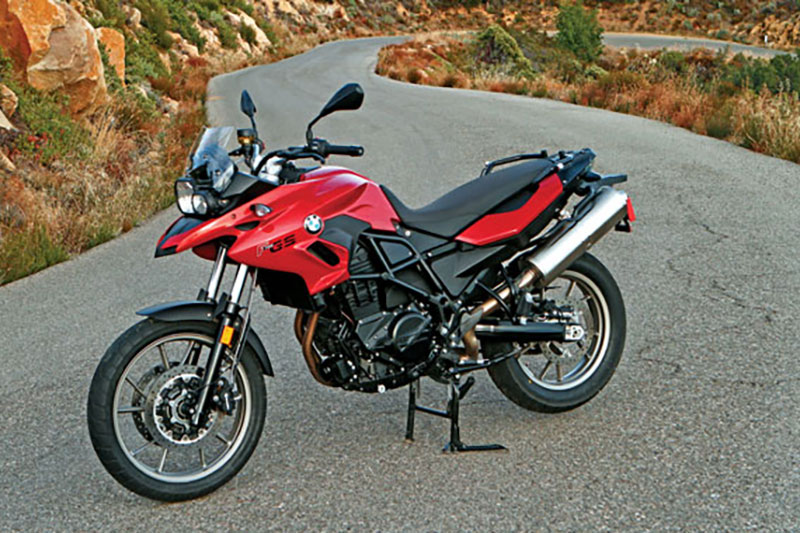2013 BMW F 700 GS

First Ride Review
When BMW decided to update the F 650 GS for 2013, it was clearly in a generous mood. The folks in Bavaria gave the street-biased enduro model more horsepower and torque, a shorter gear ratio for quicker acceleration, a second front disc brake, new switchgear and instrumentation, and updated styling. Although displacement of its 798cc parallel twin is unchanged, BMW rechristened the bike as the F 700 GS to dispense with confusion over the model name (though F 750 GS would be closer to the truth). And it did all of this while lowering the base price by $165, to $9,990.
What you get for your 10 grand, besides $10 in change, is a nimble, comfortable, fuel-efficient motorcycle. One that is begging to be accessorized for long-haul touring, dual-sporting or to suit your particular ergonomics. Offered for the first time in this displacement class are Electronic Suspension Adjustment (ESA) and Anti Spin Control (ASC), two popular options on larger BMW models. They’re available as part of the Safety Package, along with a tire-pressure monitor, for $795. Though our Red Apple Metallic—one of three new colors for 2013—test bike was not so equipped, it was fitted with the $505 Comfort Package, which adds heated grips, an onboard computer, a centerstand and saddlebag mounts (Vario saddlebags cost another $825.90, plus $55 for keyed locks). A low seat, which drops seat height from 32.3 inches to 31.1 inches, is a no-cost option, and the $250 low suspension kit will drop it another inch. Hand guards, crash bars, skid plates and much more are available from the factory accessory catalog. The only limit is your imagination, and your budget.
When I spent a week flogging an F 650 GS in the Alps a couple years ago, I found the bike’s agility, light weight and comfort to be great assets during long days on challenging roads. Building on these strengths are more pep and more stopping power. BMW claims an increase of 4 horsepower and 2 lb-ft of torque over the previous model, good for 65.4 horsepower and 55.6 lb-ft at the rear wheel on Jett Tuning’s dyno. The higher output plus shorter gearing make the F 700 GS noticeably livelier than its predecessor. Though counterbalanced with a compensation rod, the F-series parallel twin can be rather buzzy, particularly above 5,000 rpm (redline is 8,500). The F 700 GS cruises smoothly at 3,500 rpm at 60 mph in top gear, and it has good throttle response and minimal driveline lash. The adjustable clutch lever has a light pull and the 6-speed tranny shifts with ease.
The second brake disc and caliper up front—the entire 3-disc setup up is by Brembo—has transformed the F 700 GS, allowing it to scrub off speed more easily with a light pull on the adjustable lever. The latest generation of BMW Motorrad two-channel ABS is standard, and a button on the left handlebar makes it easy to turn off. The non-adjustable 41mm fork and rebound and preload adjustable (the latter with a remote knob) rear shock, which offer 7 and 6.7 inches of travel front and rear, are undersprung for my 200-pound curb weight and the front chatters over bumps at high speed, but otherwise the suspension provides a comfortable, compliant ride.
The F 700 GS is a people-pleasing motorcycle, one that’s loads of fun to ride and doesn’t jam any thorns in your side. The wide handlebar, fleet steering geometry, low center of gravity (the 4.2-gallon fuel tank is under the seat) and narrow Bridgestone Battle Wing tires (110/80-19 front, 140/80-17 rear) give the bike athletic handling, and the firm, supportive seat and upright riding position are just right. Ample cornering clearance, good fuel economy (45.8 mpg average), a modest curb weight (480 pounds wet), a standard 12V socket and a strong chassis put more checks in the pro column. More motorcycle for less money equals miles of smiles.
